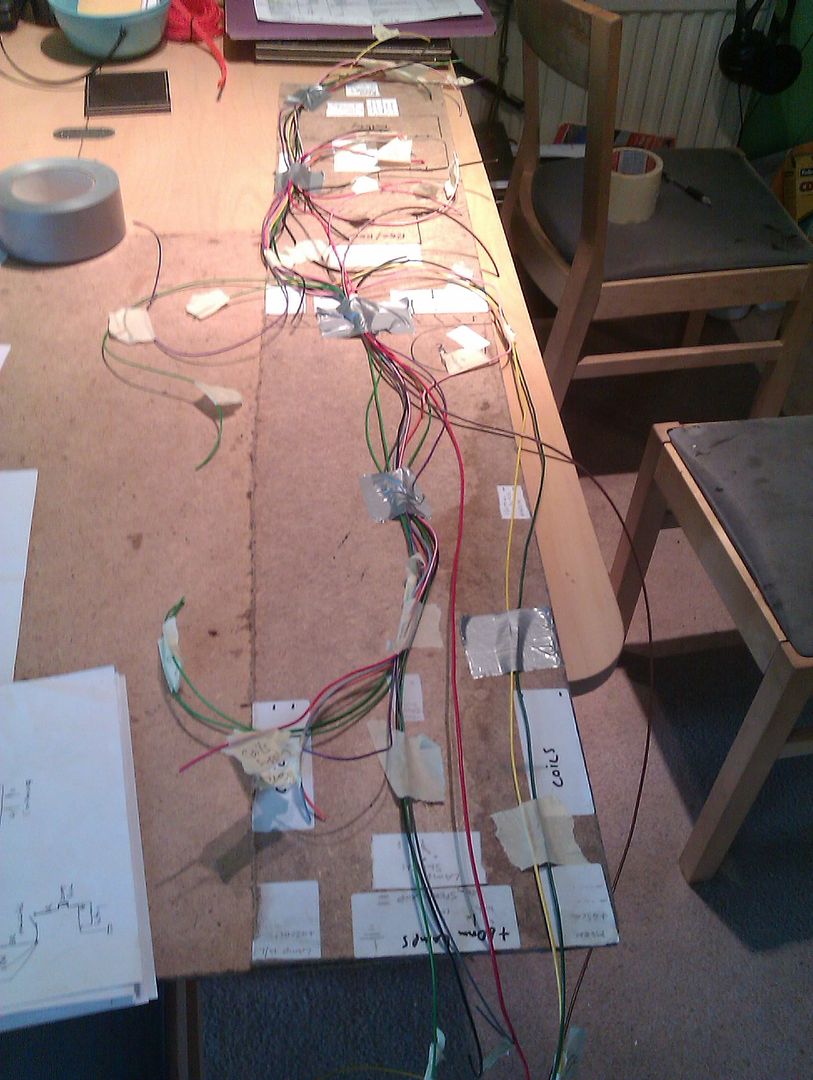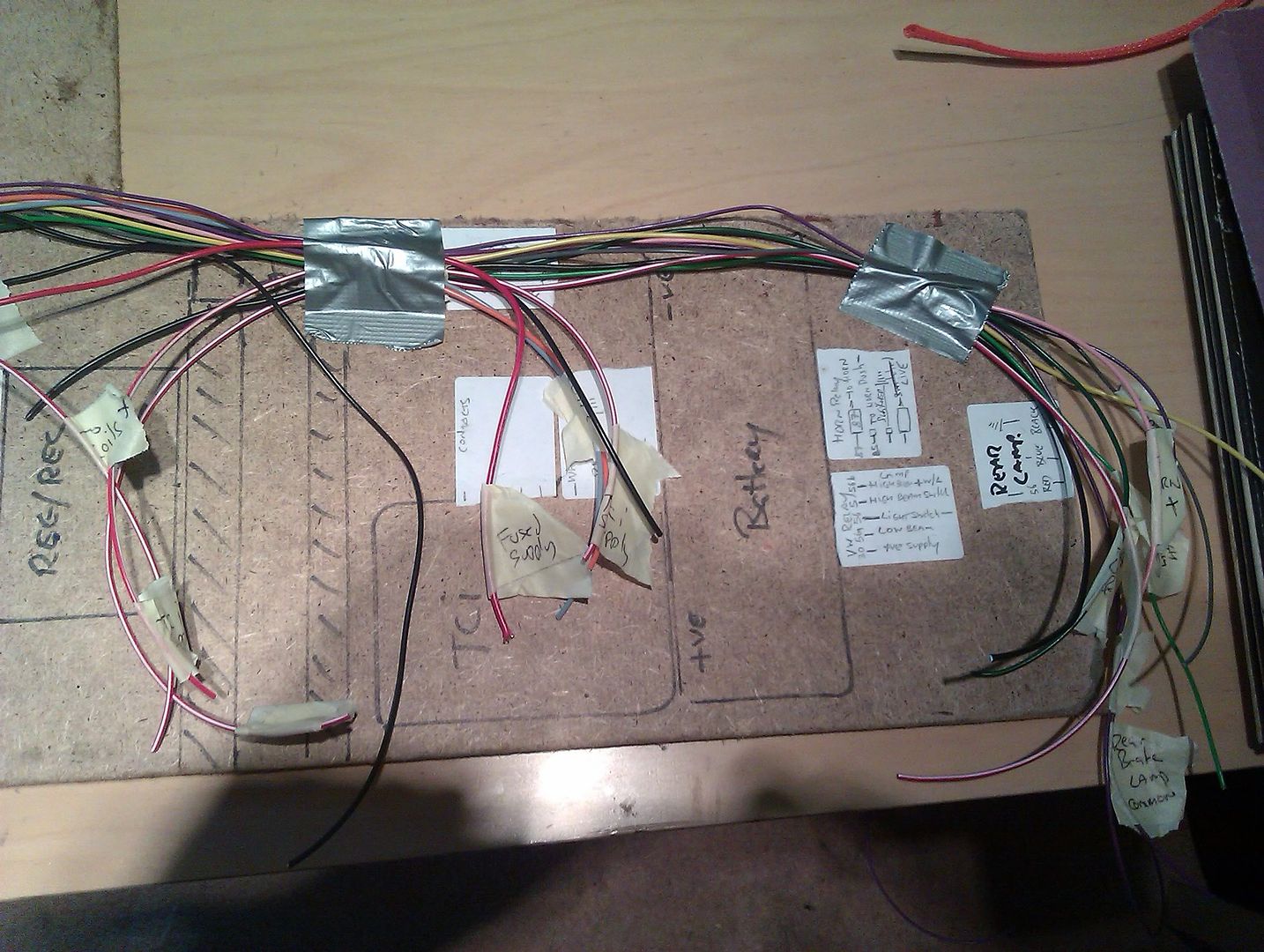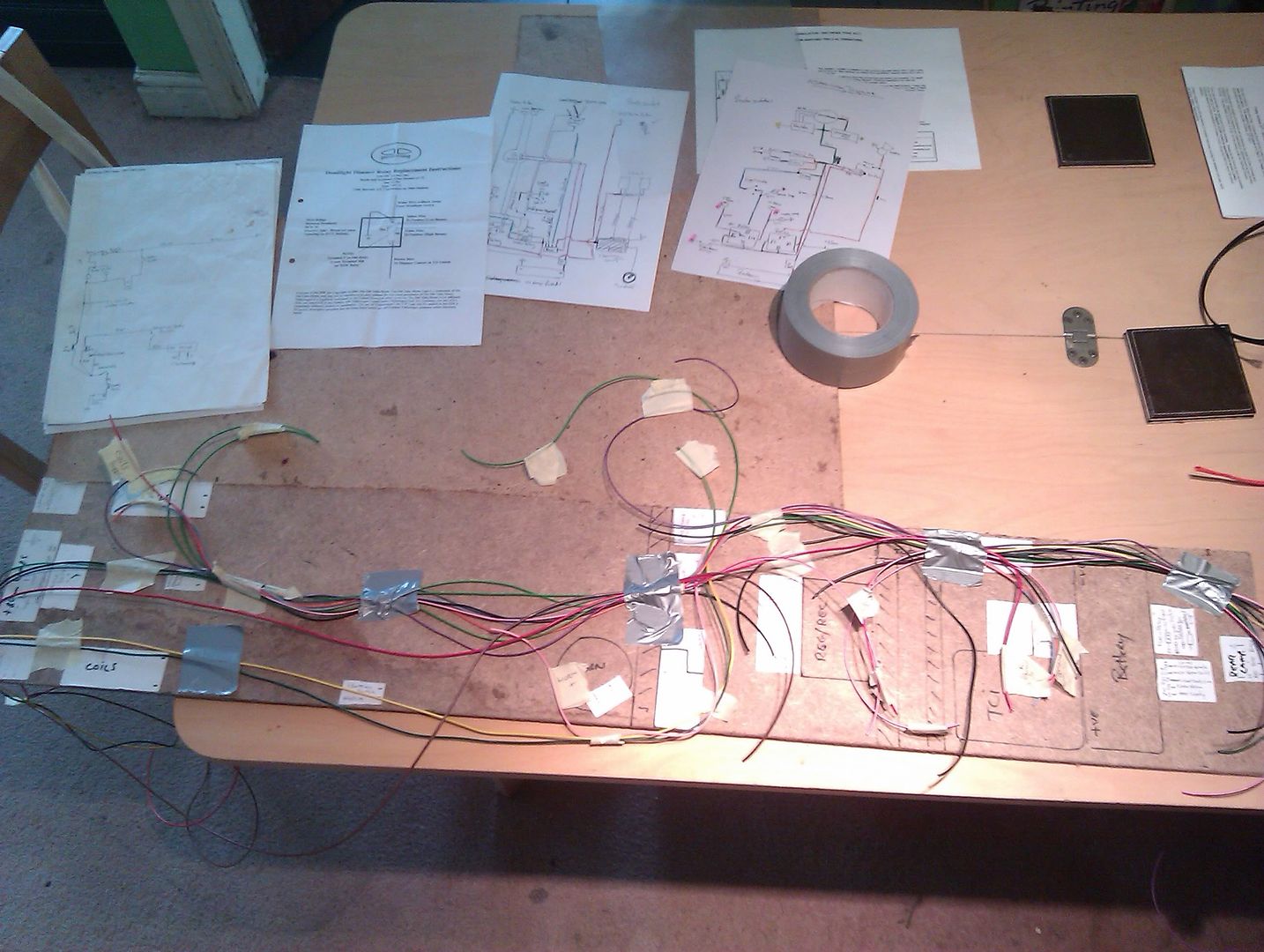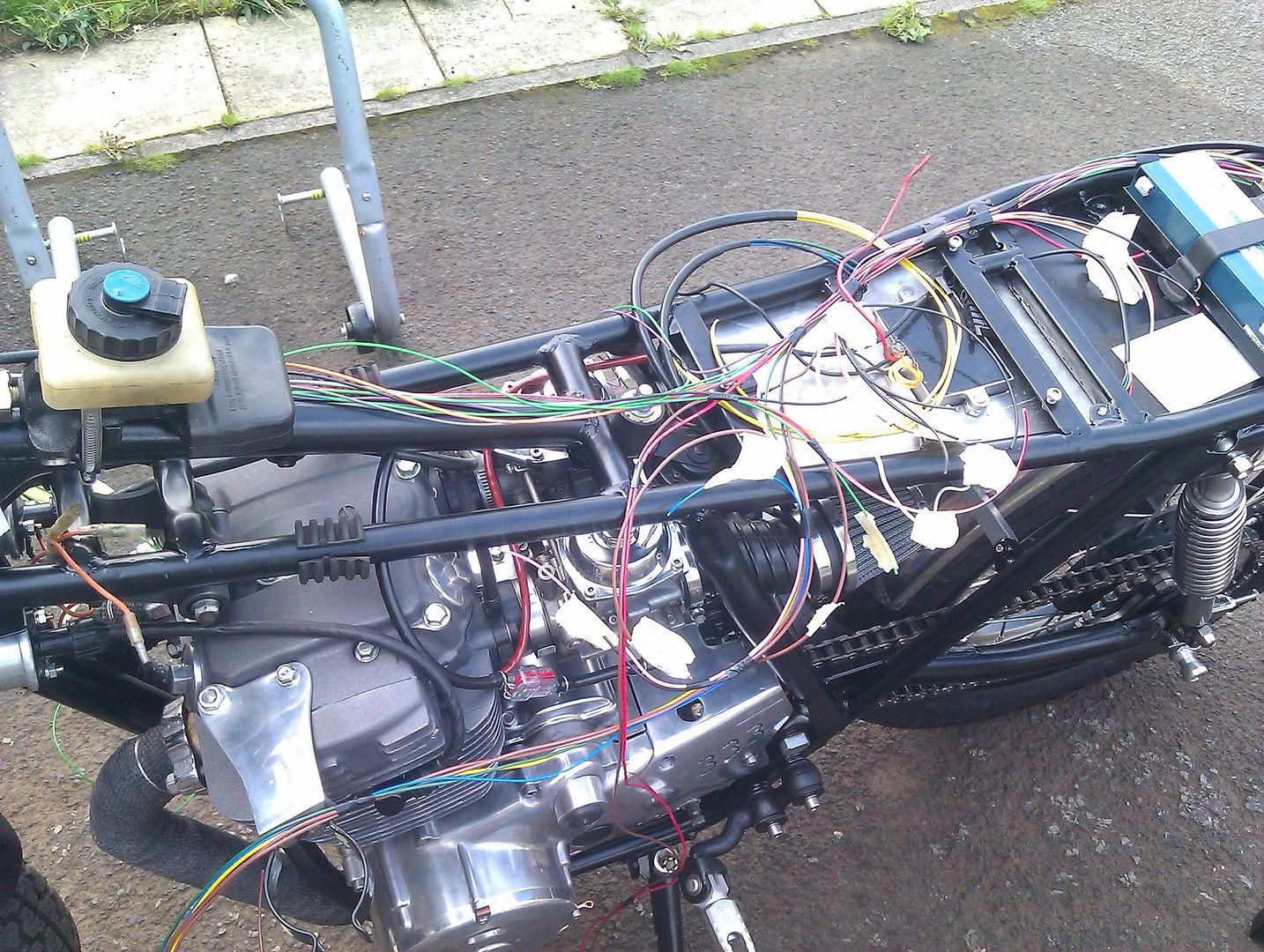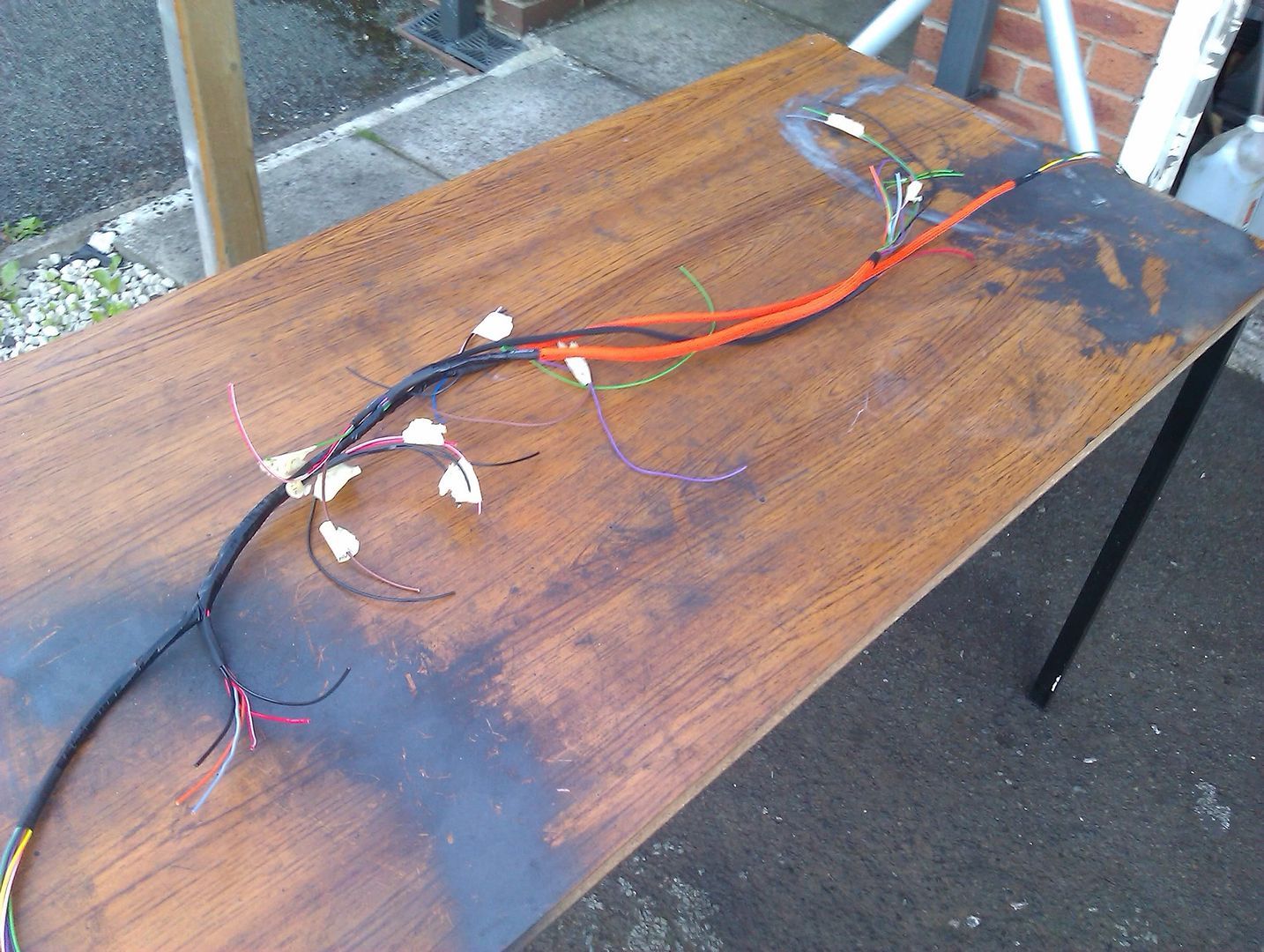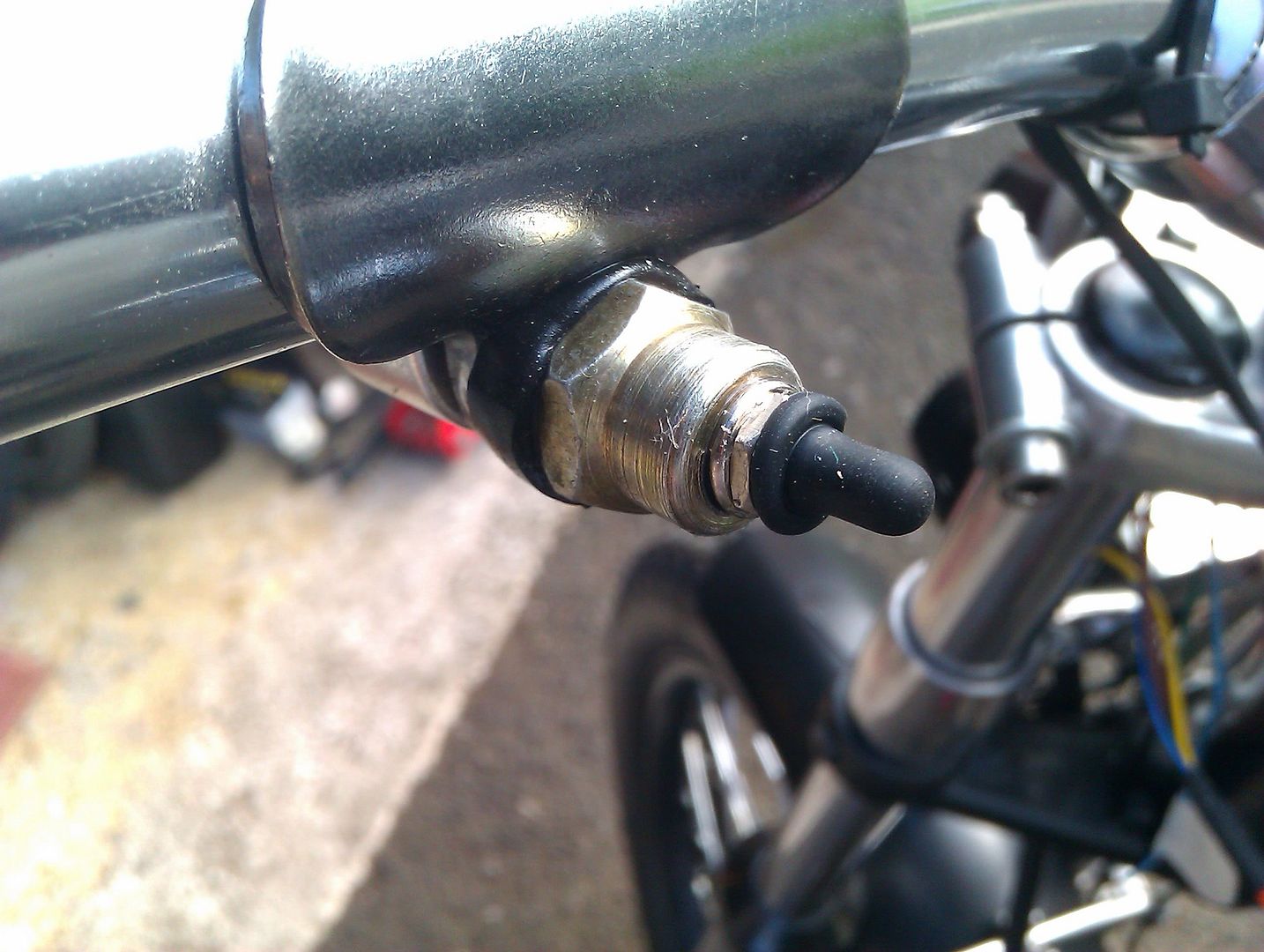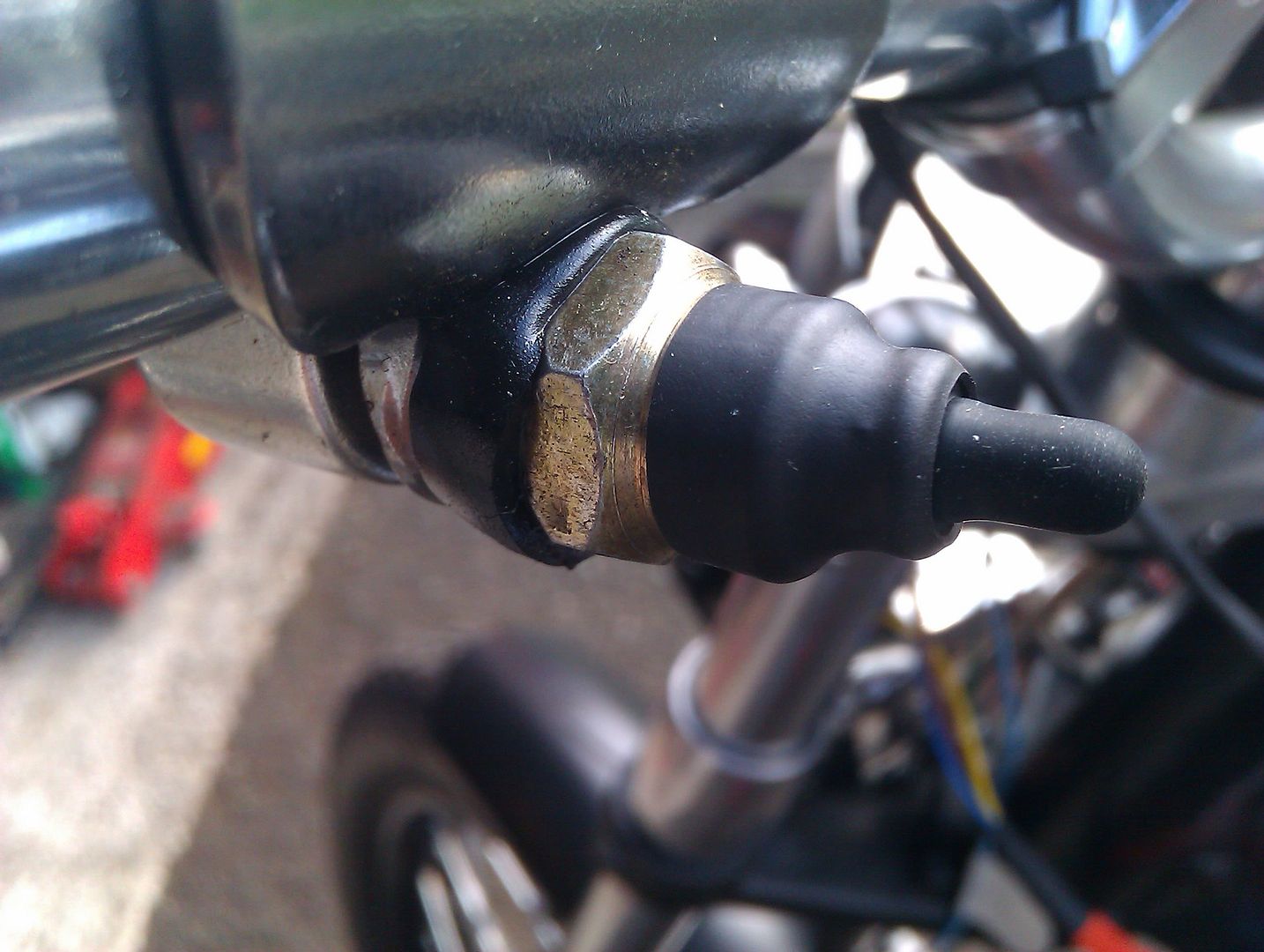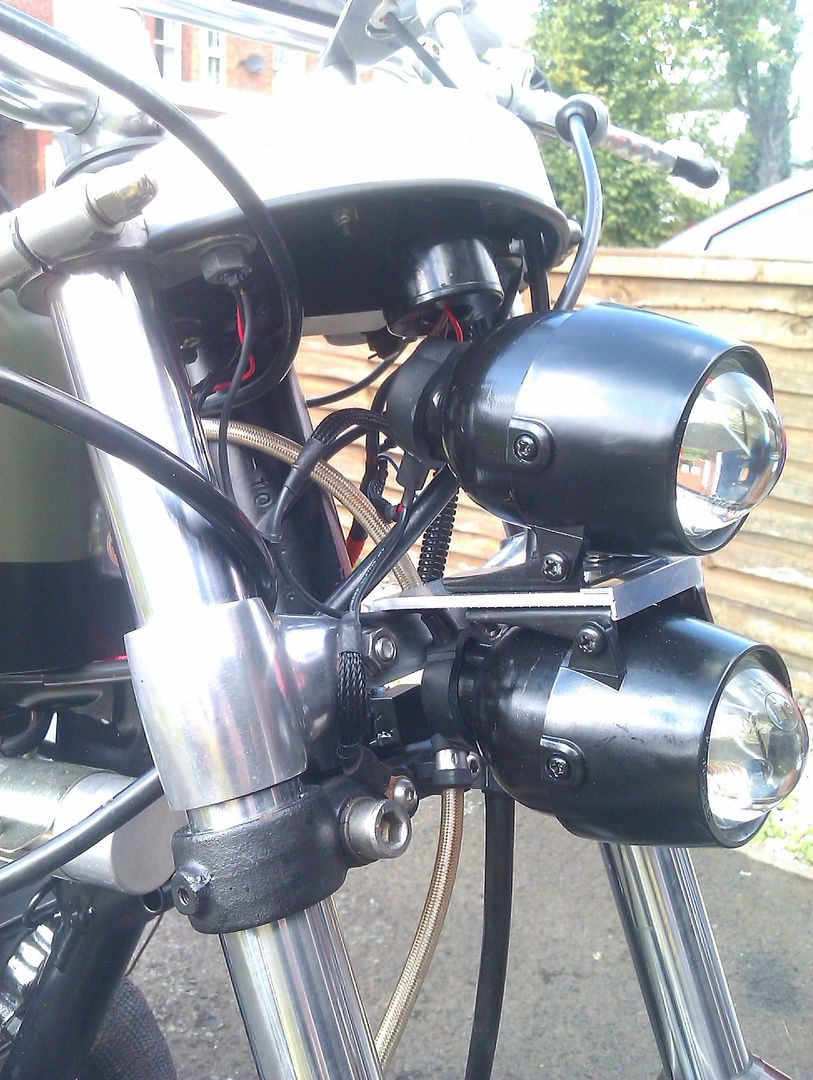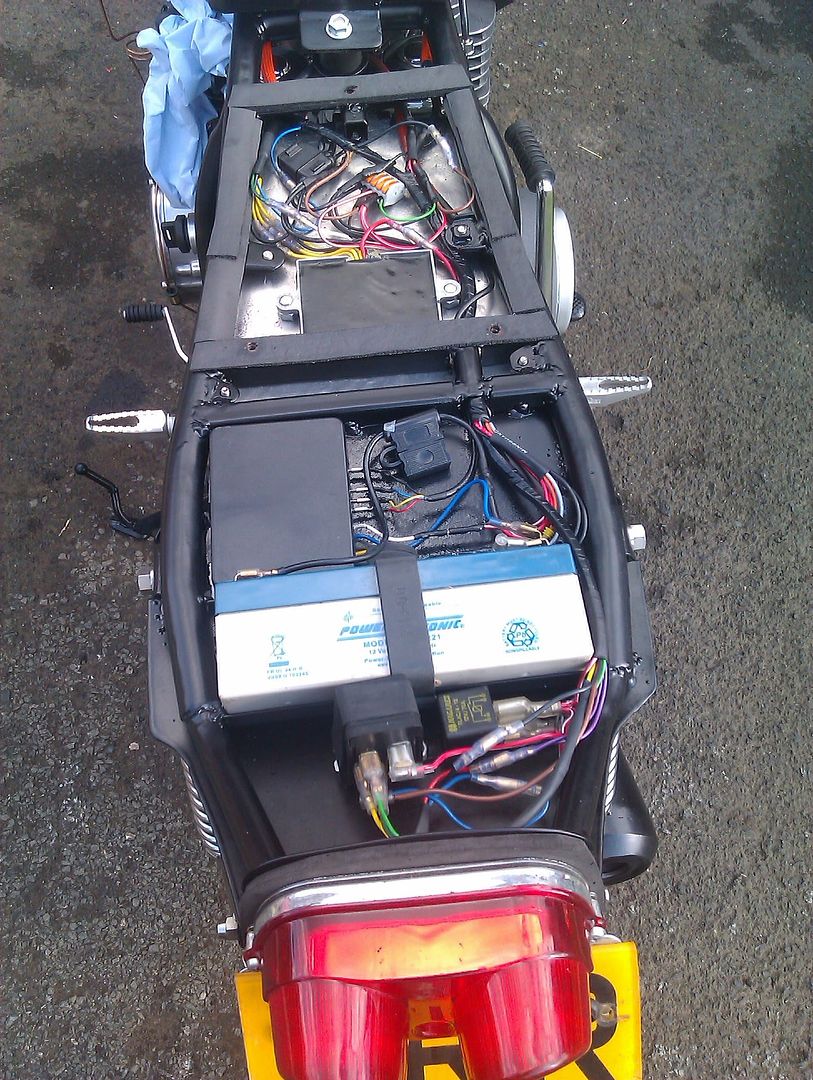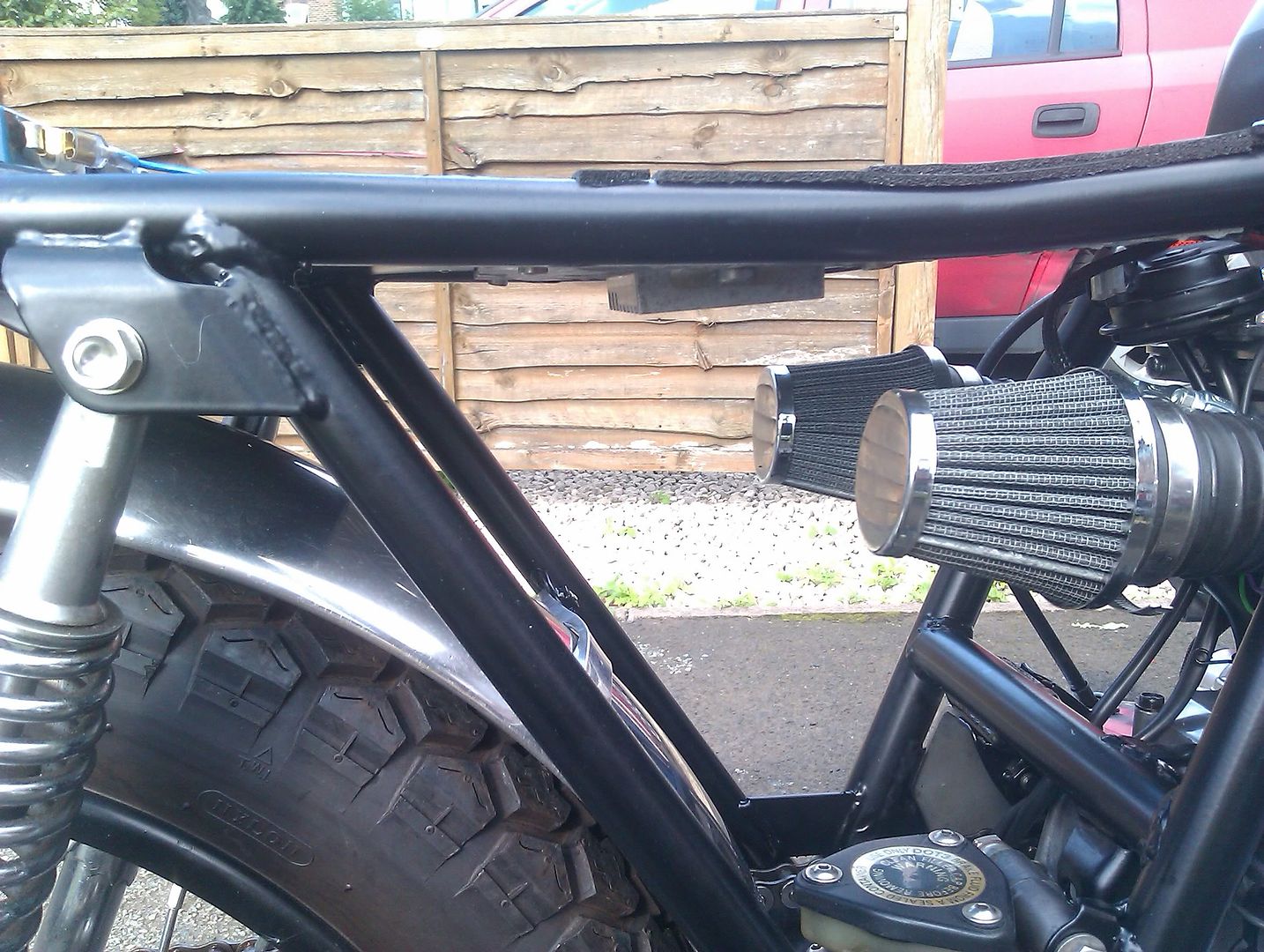well folks, started the rewire tonight and will add the stages as and when I complete them. If I do it this way, I can remember what I did rather than trust my crap memory.
this is for my tracker without starter, indicators and with an ignition relocation.
Plan
This is the most important stage of any rewire, plan! boring I know, but absolutley necessary.
first make sure you have all the bits on your bike, no good if the engine is in london and the frame in holland. get it built!
1. make out a shopping list in excel, what size of wire, how long and what is its job and how is it going to be protected from the elements and will it look good too?
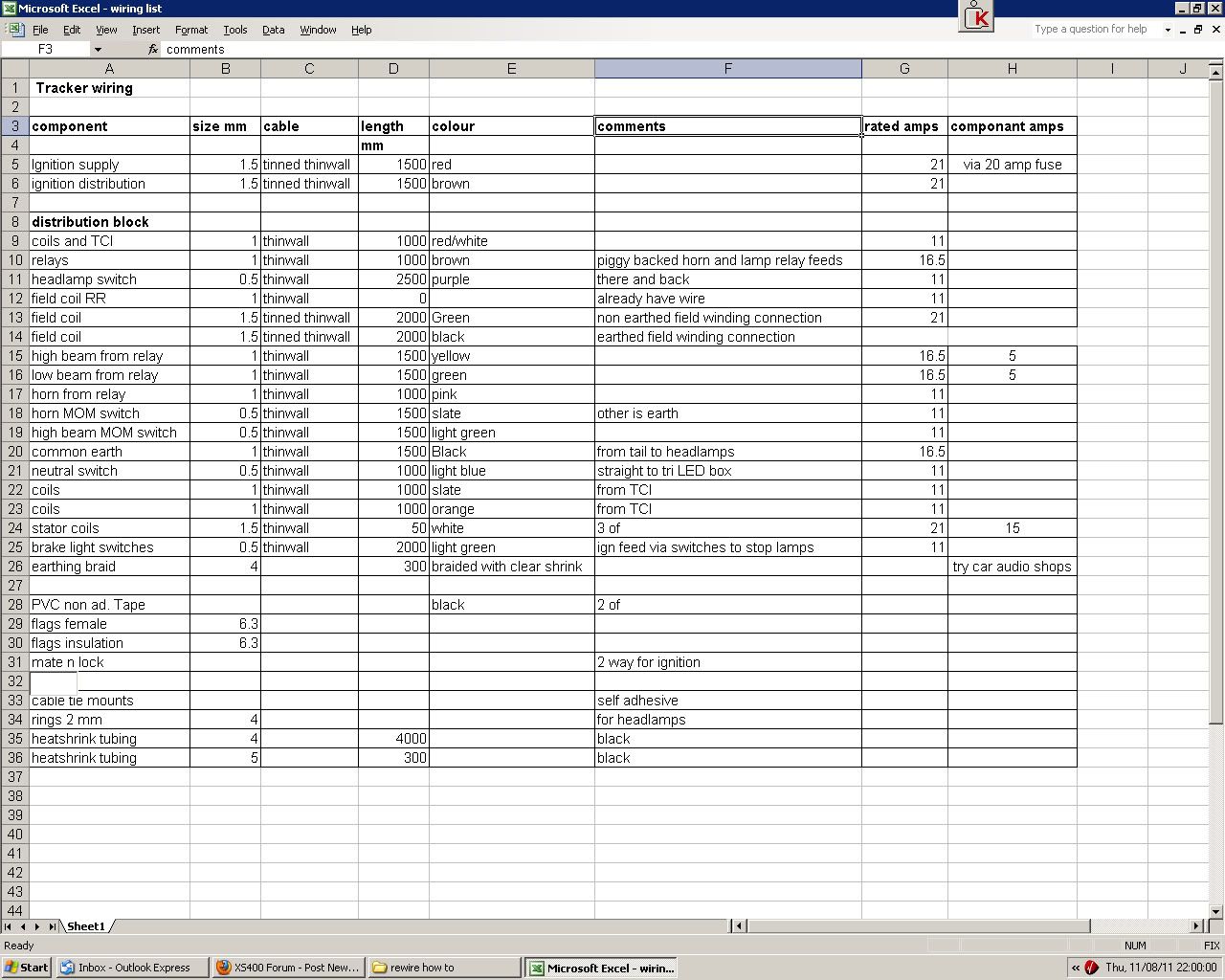
I use vehicle wiring products for everything, saves on postage. this stage took 3 weeks to do. there are 2 types of wire, the older stuff which is thicker per amp rating and the thinwall stuff which, as the name suggests, has a high performance PVC insulation so making the wires thinner, thus lighter and easier to hide!
to work out what you need size wise you calculate watts divide by Volts = amps, don't forget that volts can drop on a bike so I allowed 10volts in the calculation as a buffer.
after sizes you need to keep to a colour scheme. The original one is the best and will help to identify and problem solve further on in the rewire. There are also tracer wires which, when 2 colours are given, the first is the main colour and the second is the tracer or coloured line of the wire.
2. layout
you need a layout of the proposed wiring loom and the best way to do that is make a layout board.
this gives the length and width of the bike's frame and allows you to visualise the layout and route of your proposed wiring.
here's mine;
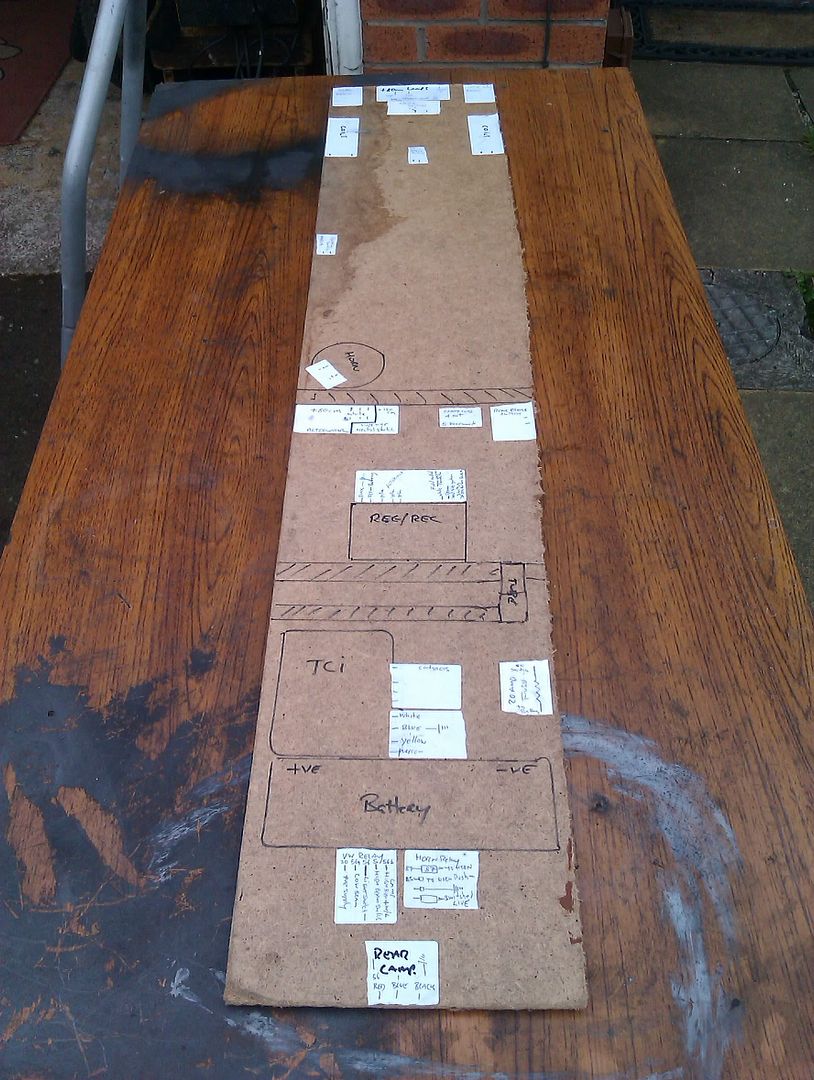
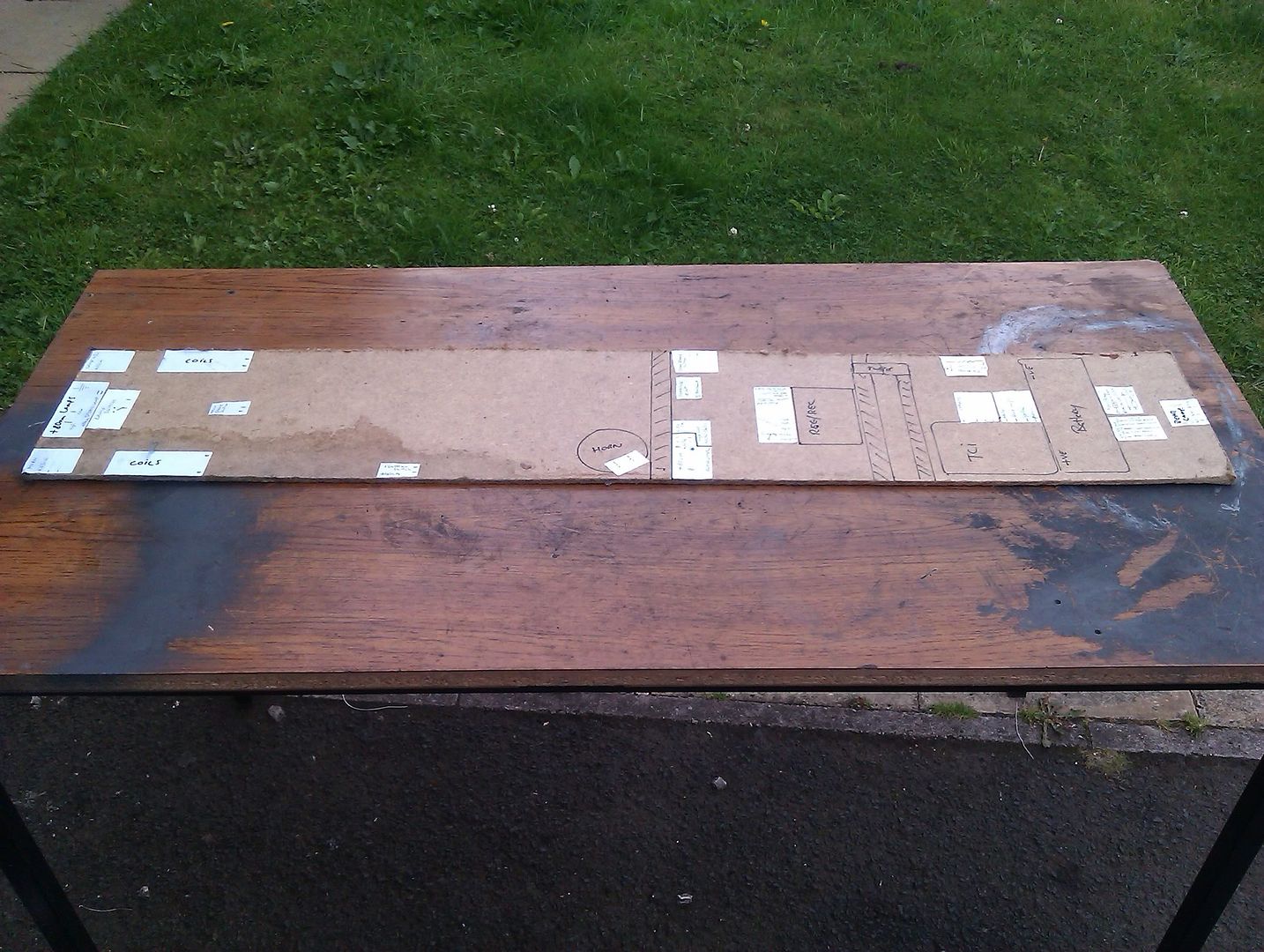
i stuck labels on the board indicating the actual device to be wired and any obstructions there. That way the length of wire can be calculated more acuratley.
If anything is lower or higher or wider than the board, I add a label , say what the device is and write + 80mm for example!
first componant
I started with the alternator wiring first, I think its the trickier part of wiring and its full of oily mess etc.
first things first, you need tools
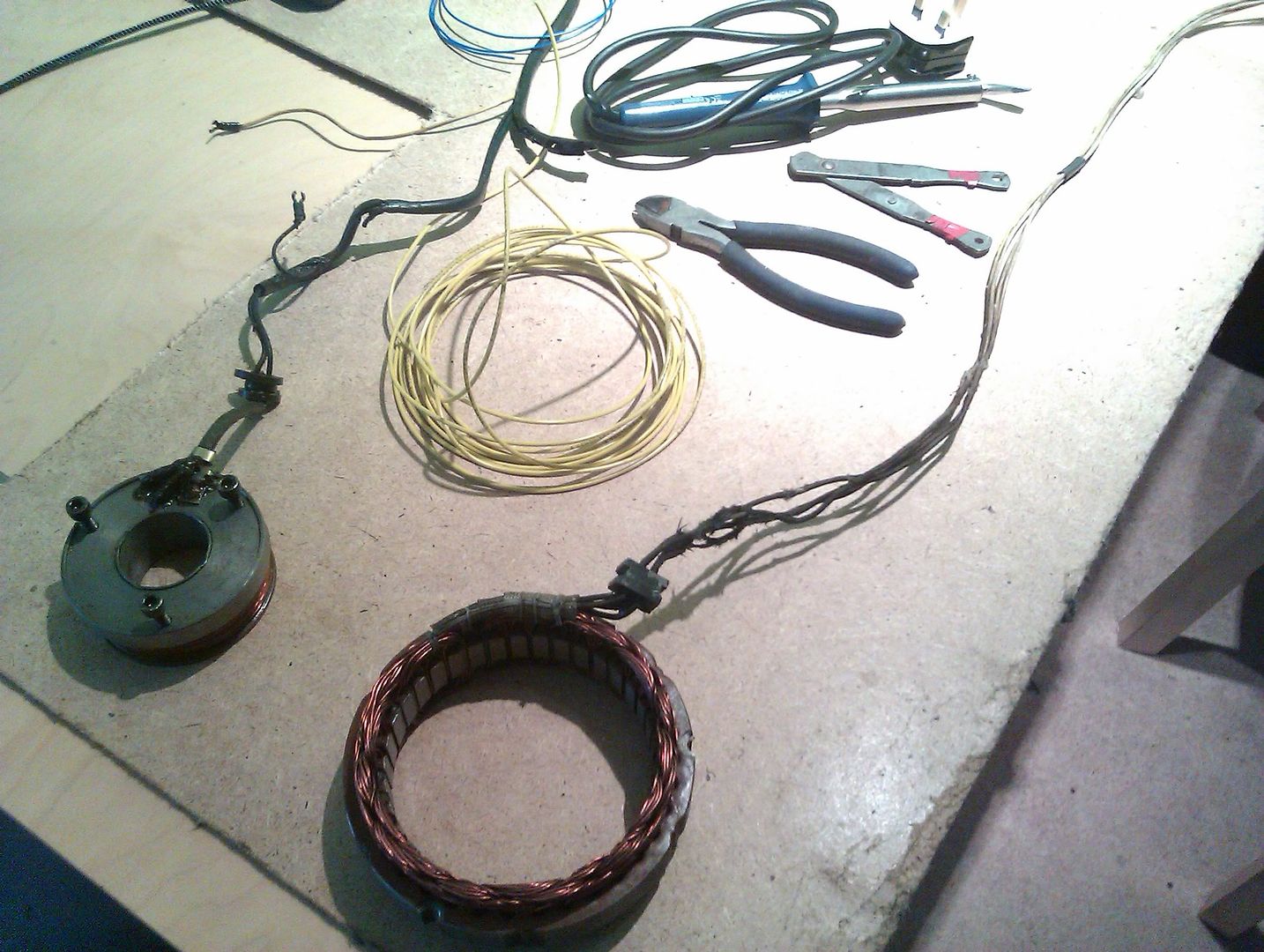
wire snips, some insulating tape, scissors, soldering iron with solder and flux, heat gun for shrink sleeves and wire strippers.
after measuring what I needed, I used yellow tinned thinwall in 1.5mm which equals 21 amps. its more or less the same as the original, but tinned wall is soldered right along the whole length of the wire and is inpervious to water and oil etc so it should last in the environment near that front sprocket!
I started on the stator first. i snipped the wires and degreased using some carb cleaner I had lying around. the wires go through the rubber grommet then you thread on a piece of shrink wrap.
I then fluxed both ends and splayed them out a bit ( you don't want to join it side to side as there isn't much room nestling in the cover) the ends were brought together and solder applied.
I did this for 3 connections, the 4th one is redundant so i just cut it and added a shrink tape on end to leave it terminating within the grommet.

did the field coil the same way as the stator.
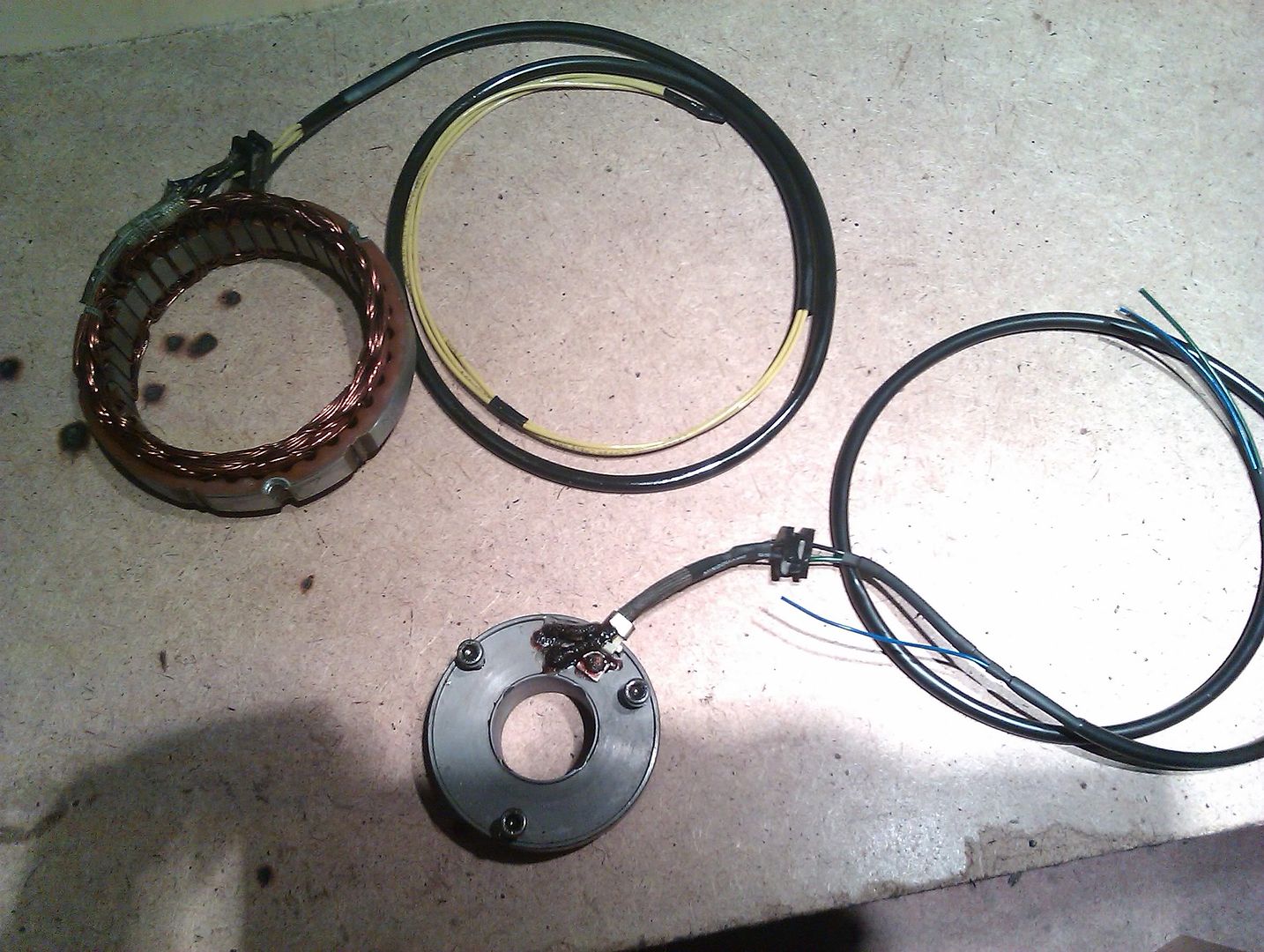
this picture shows the stator in the cover and you can see why i needed to make sure the wires didn't over lap
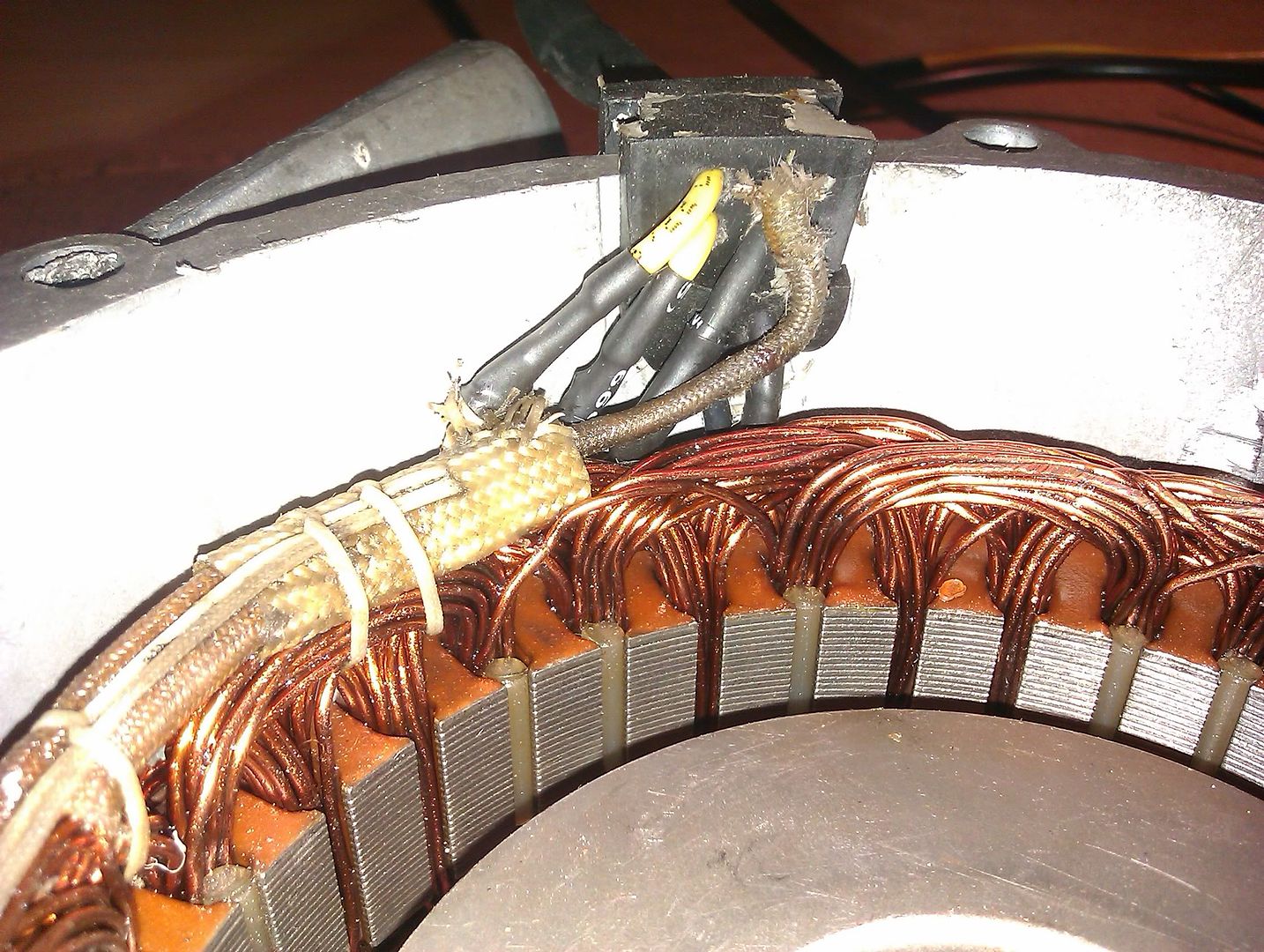
the finished article.

the neutral wire was measured from the field coil as per original and I used shrink wrap and PVC tubing, both before and after the neutral wire.
when you get long length of wires, every 500mm just put a bit of insulating tape there to stop a tangled mess. I used PVC covering on these with shrink tape on each end to stop any ingress of water etc.
next is ignition wire to switched live distribution, but I'm waiting for a crimper to come from a friend to start that.
that's all for now folks
this is for my tracker without starter, indicators and with an ignition relocation.
Plan
This is the most important stage of any rewire, plan! boring I know, but absolutley necessary.
first make sure you have all the bits on your bike, no good if the engine is in london and the frame in holland. get it built!
1. make out a shopping list in excel, what size of wire, how long and what is its job and how is it going to be protected from the elements and will it look good too?

I use vehicle wiring products for everything, saves on postage. this stage took 3 weeks to do. there are 2 types of wire, the older stuff which is thicker per amp rating and the thinwall stuff which, as the name suggests, has a high performance PVC insulation so making the wires thinner, thus lighter and easier to hide!
to work out what you need size wise you calculate watts divide by Volts = amps, don't forget that volts can drop on a bike so I allowed 10volts in the calculation as a buffer.
after sizes you need to keep to a colour scheme. The original one is the best and will help to identify and problem solve further on in the rewire. There are also tracer wires which, when 2 colours are given, the first is the main colour and the second is the tracer or coloured line of the wire.
2. layout
you need a layout of the proposed wiring loom and the best way to do that is make a layout board.
this gives the length and width of the bike's frame and allows you to visualise the layout and route of your proposed wiring.
here's mine;


i stuck labels on the board indicating the actual device to be wired and any obstructions there. That way the length of wire can be calculated more acuratley.
If anything is lower or higher or wider than the board, I add a label , say what the device is and write + 80mm for example!
first componant
I started with the alternator wiring first, I think its the trickier part of wiring and its full of oily mess etc.
first things first, you need tools

wire snips, some insulating tape, scissors, soldering iron with solder and flux, heat gun for shrink sleeves and wire strippers.
after measuring what I needed, I used yellow tinned thinwall in 1.5mm which equals 21 amps. its more or less the same as the original, but tinned wall is soldered right along the whole length of the wire and is inpervious to water and oil etc so it should last in the environment near that front sprocket!

I started on the stator first. i snipped the wires and degreased using some carb cleaner I had lying around. the wires go through the rubber grommet then you thread on a piece of shrink wrap.
I then fluxed both ends and splayed them out a bit ( you don't want to join it side to side as there isn't much room nestling in the cover) the ends were brought together and solder applied.
I did this for 3 connections, the 4th one is redundant so i just cut it and added a shrink tape on end to leave it terminating within the grommet.

did the field coil the same way as the stator.

this picture shows the stator in the cover and you can see why i needed to make sure the wires didn't over lap

the finished article.

the neutral wire was measured from the field coil as per original and I used shrink wrap and PVC tubing, both before and after the neutral wire.
when you get long length of wires, every 500mm just put a bit of insulating tape there to stop a tangled mess. I used PVC covering on these with shrink tape on each end to stop any ingress of water etc.
next is ignition wire to switched live distribution, but I'm waiting for a crimper to come from a friend to start that.
that's all for now folks

